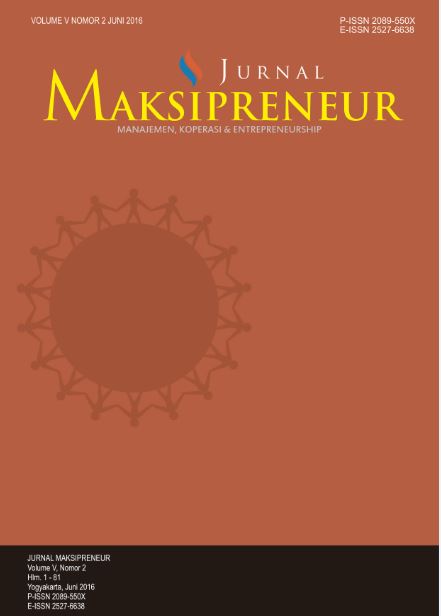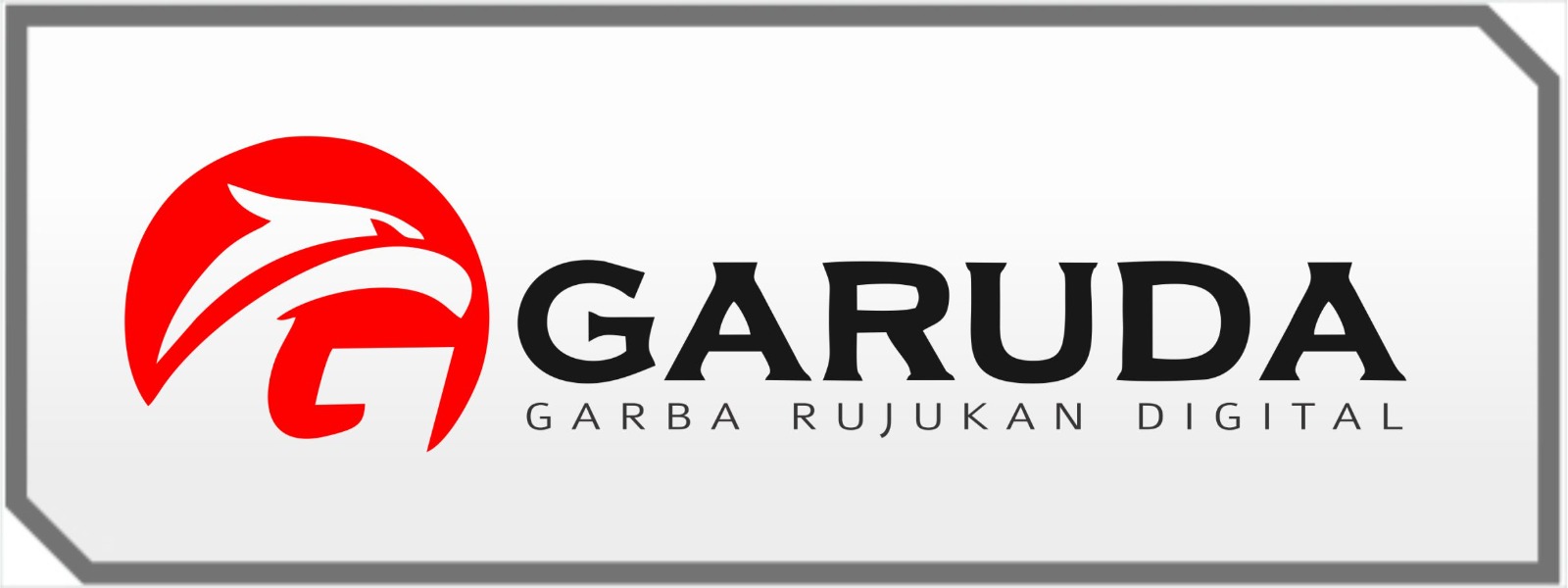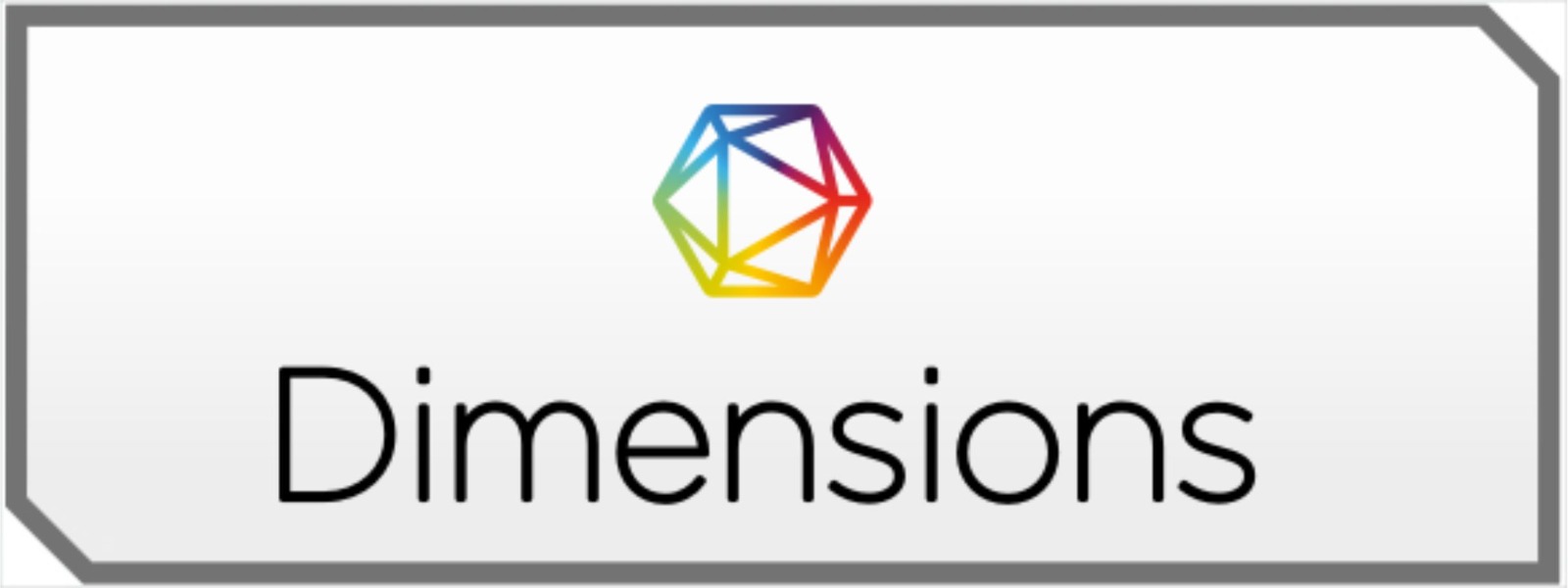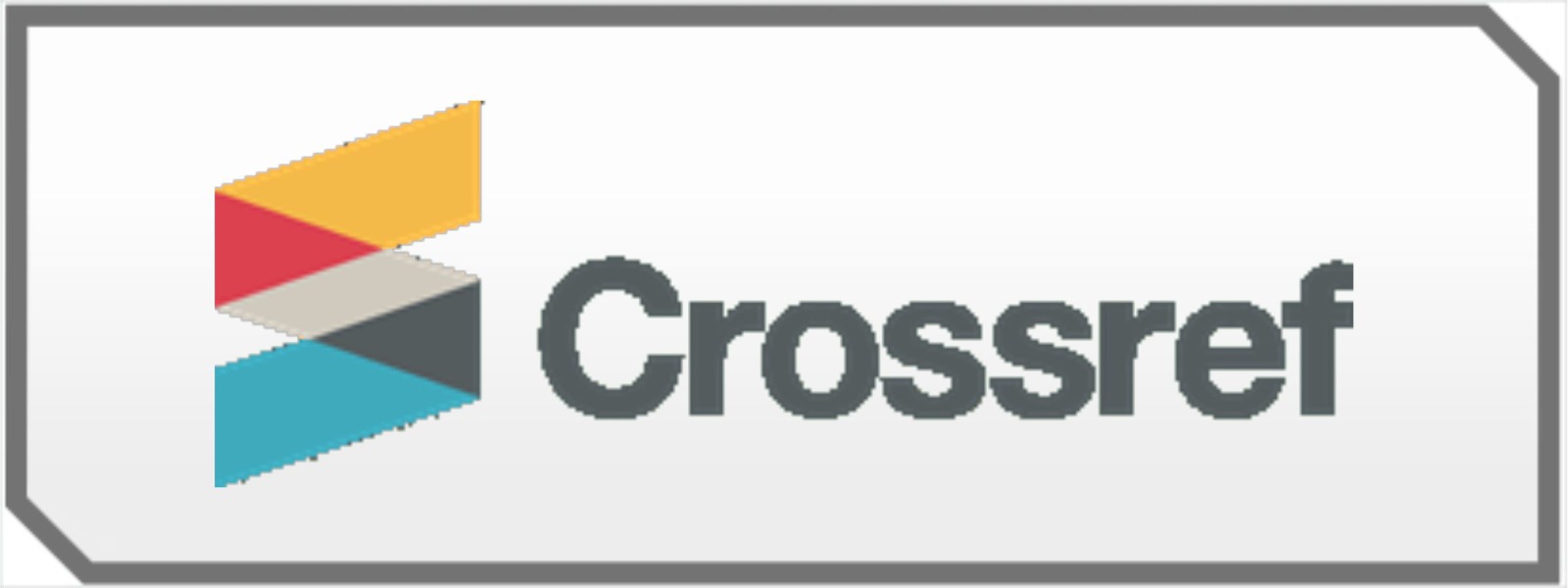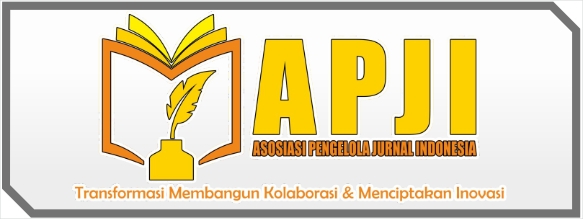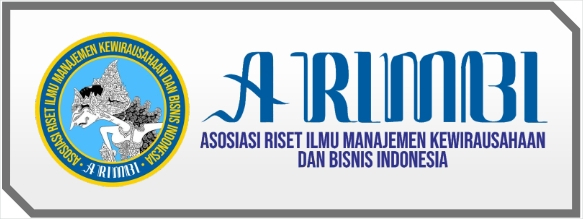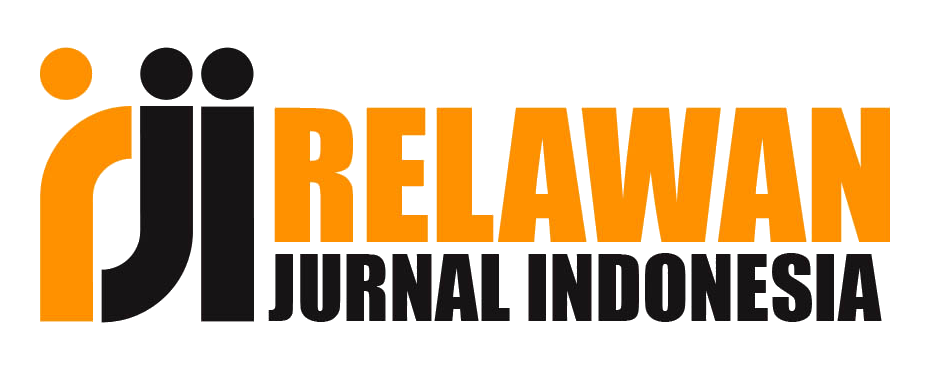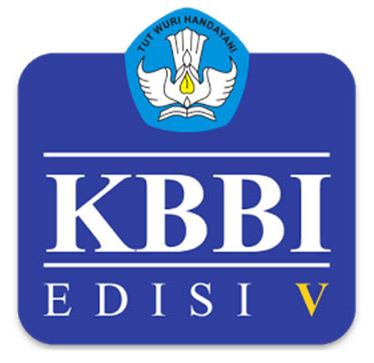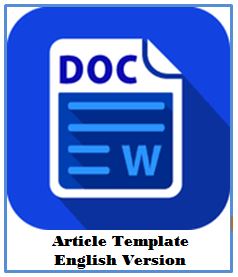Integrasi Fleksibilitas Strategis dan Kapabilitas Pembelajaran Organisasi sebagai Second-order Factor terhadap Kinerja Inovasi dan Perusahaan
DOI:
https://doi.org/10.30588/jmp.v10i1.693Keywords:
Business Performance, Innovation Performance, Organizational Learning Capability, Strategic FlexibilityAbstract
Tegal was once dubbed Japan's Indonesia, but the presence of the disruption era caused turbulence for Tegal metal SMEs (Small and Medium Enterprises). Many SMEs are not ready to face the changes that occur so that the bankrupt. Facing this situation, efforts are needed to maintain it. Efforts are made, among others, through the company's dynamic ability to manage the organization's internal resources. This study aims to examine the role of strategic flexibility and innovation performance as a mediating relationship between organizational learning capability and business performance. The objects in 224 SME’s of metal smelting and casting in Tegal were randomly selected. The tool tests the hypothesis using the structural eqution model (SEM). The results of the study concluded that strategic flexibility reinforces the positive effect of organizational learning capabilities on innovation performance and business performance, so that when strategic flexibility is high, business performance will increase higher, when associated with high innovation performance. Strategic flexibility is a source of competitive advantage that is supported by the role of management, and is driven by superior employees as organizational assets. So the company has the ability to be responsive and adaptive to changes that occur. This finding is a mechanism for navigating to face market turbulence and competition.References
Allis, N. (2006). “Cross-Sectional Vs Longitudinal”: Pilihan Rancangan Waktu Dalam Penelitian Perumahan Permukiman. DIMENSI (Jurnal Teknik Arsitektur), 34(1), 52–58.
Bourne, M., Pavlov, A., Franco-Santos, M., Lucianetti, L., & Mura, M. (2013). Generating organisational performance: The contributing effects of performance measurement and human resource management practices. International Journal of Operations and Production Management, 33(11), 1599–1622. https://doi.org/10.1108/IJOPM-07-2010-0200.
BPS RI (2019). Keadaan Pekerja di Indonesia. (S. S. U. dan Pendapatan, Ed.). Jakarta: CV Tanjung Citra.
Cepeda, G., & Vera, D. (2007). Dynamic capabilities and operational capabilities: A knowledge management perspective. Journal of Business Research, 60(5), 426–437. https://doi.org/10.1016/j.jbusres.2007.01.013.
Chan, A. T. L., Ngai, E. W. T., & Moon, K. K. L. (2017). The effects of strategic and manufacturing flexibilities and supply chain agility on firm performance in the fashion industry. European Journal of Operational Research, 259(2), 486–499. https://doi.org/10.1016/j.ejor.2016.11.006.
Chiva, R., Ghauri, P., & Alegre, J. (2014). Organizational Learning, Innovation and Internationalization: A Complex System Model. British Journal of Management, 25(4), 687–705. https://doi.org/10.1111/1467-8551.12026.
Chowdhury, M. S. A., Azam, M. K. G., & Islam, S. (2015). Problems and Prospects of SME Financing in Bangladesh. Asian Business Review, 2(2), 51. https://doi.org/10.18034/abr.v2i2.304.
Combe, I. A., Rudd, J. M., Leeflang, P. S. H., & Greenley, G. E. (2012). Antecedents to strategic flexibility: Management cognition, firm resources and strategic options. European Journal of Marketing, 46(10), 1320–1339. https://doi.org/10.1108/03090561211248053.
Curado, C. (2006). Organisational learning and organisational design. Learning Organization, 13(1), 25–48. https://doi.org/10.1108/09696470610639112.
Darroch, J., & Mcnaughton, R. (2002). Beyond market orientation Knowledge management and the innovativeness of New Zealand firms. European Journal of Marketing, 37(3/4), 572–593. https://doi.org/10.1108/03090560310459096.
Day, G. S. (2013). The of Market-Drive Capabilities Organizations. Journal of Marketing, 58(4), 37–52.
de Waal, A. A. (2002). The power of world-class performance management: Use it! Measuring Business Excellence, 6(3), 9–19. https://doi.org/10.1108/13683040210441940.
Eisenhardt, K. M., & Martin, J. A. (2000). Dynamic capabilities: What are they? Strategic Management Journal, 21(10–11), 1105–1121. https://doi.org/10.1002/1097-0266(200010/11)21:10/11<1105::AID-SMJ133>3.0.CO;2-E.
Foss, N. J. (2000). The Resource-Based Tangle: Towards a Sustainable Explanation of Competitive Advantage. Institut for Industri Ekonomi Og Virksomheds Strategi, (February), 1–42.
Ghozali, I. (2016). Aplikasi Analisis Multivariete dengan Program IBM SPSS 23 (Edisi 8, C). Semarang: Badan Penerbit Universitas Diponegoro.
Gomes, G., & Wojahn, R. M. (2017). Organizational learning capability, innovation and performance: study in small and medium-sized enterprises (SMES). Revista de Administração, 52(2), 163–175. https://doi.org/10.1016/j.rausp.2016.12.003.
Grewal, R., & Tansuhaj, P. (1995). For Managing Economic Crisis: The Role of Market Orientation and Strategic Flexibility. Journal of Marketing, 65(1), 67–80.
Hassan, M. U., Shaukat, S., Nawaz, M. S., & Naz, S. (2013). Effects of Innovation Types on Firm Performance: an Empirical Study on Pakistan’s Manufacturing Sector. Pakistan Journal of Commerce and Social Sciences, 7(2), 243–262.
Hirst, G., Mann, L., Bain, P., Pirola-Merlo, A., & Richver, A. (2004). Learning to lead: The development and testing of a model of leadership learning. Leadership Quarterly, 15(3), 311–327. https://doi.org/10.1016/j.leaqua.2004.02.011.
Hitt, A. M., Ireland, R. D., & Hoskisson, E. R. (2009). Stragetic Management: Competitiveness and Globalization (Concepts and Cases) 8th Edition. https://doi.org/10.1017/CBO9781107415324.004.
Hooper, D., Coughlan, J., & Mullen, M. R. (2008). Structural equation modelling: Guidelines for determining model fit. Electronic Journal of Business Research Methods, 6(1), 53–60. https://doi.org/10.21427/D79B73.
Hoopes, D. G., Madsen, T. L., & Walker, G. (2003). Guest editors’ introduction to the special issue: Why is there a resource-based view? Toward a theory of competitive heterogeneity. Strategic Management Journal, 24(10 SPEC ISS), 889–902. https://doi.org/10.1002/smj.356.
Jerez-Gómez, P., Céspedes-Lorente, J., & Valle-Cabrera, R. (2005). Organizational learning capability: A proposal of measurement. Journal of Business Research, 58(6), 715–725. https://doi.org/10.1016/j.jbusres.2003.11.002.
Jiménez-Jiménez, D., & Sanz-Valle, R. (2011). Innovation, organizational learning, and performance. Journal of Business Research, 64(4), 408–417. https://doi.org/10.1016/j.jbusres.2010.09.010.
Kevin, Z., & Wu Fang Zheng. (2010). Technological Capability, Strategic Flexibility, and Product Innovation. Strategic Management Journal, 31, 547–561. https://doi.org/10.1002/smj.830.
Khadhraoui, M., Lakhal, L., Thanitnan, C., & Yuenyong, T. (2018). The impact of organizational learning on performance of spin-offs. Journal of Advanced Research in Dynamical and Control Systems, 10(4 Special Issue), 253–261.
López, M. V., Garcia, A., & Rodriguez, L. (2007). Sustainable development and corporate performance: A study based on the Dow Jones sustainability index. Journal of Business Ethics, 75(3), 285–300. https://doi.org/10.1007/s10551-006-9253-8.
Nadkarni, S., & Herrmann, P. (2010). CEO personality, strategic flexibility, and firm performance. Academy Management Journal, 53(5), 1050–1073.
Neely, A. (2002). Business performance measurement: Theory and practice. Choice Reviews Online, 40(02), 65–70. https://doi.org/10.5860/choice.40-1010.
Radomska, J. (2015). Strategic Flexibility of Enterprises. Journal of Economics, Business and Management, 3(1), 19–23. https://doi.org/10.7763/joebm.2015.v3.148.
Rahim, T., & Zainuddin, Y. (2017). Moderating effect of environmental turbulence on firm's technological innovation capabilities (TIC) and business performance in the automotive industry in Malaysia: A conceptual framework. MATEC Web of Conferences, 90, 01009. https://doi.org/10.1051/matecconf/20179001009.
Rosenbusch, N., Brinckmann, J., & Bausch, A. (2011). Is innovation always beneficial? A meta-analysis of the relationship between innovation and performance in SMEs. Journal of Business Venturing, 26(4), 441–457. https://doi.org/10.1016/j.jbusvent.2009.12.002.
Santos-Vijande, M. L., & Álvarez-González, L. I. (2007). Innovativeness and organizational innovation in total quality oriented firms: The moderating role of market turbulence. Technovation, 27(9), 514–532. https://doi.org/10.1016/j.technovation.2007.05.014.
Sushil. S. (2014). Managing Continuity and Change for Strategic Performance. Global Journal of Flexible Systems Management, 15(4), 275–276. https://doi.org/10.1007/s40171-014-0079-4.
Tamayo-Torres, I., Gutiérrez-Gutiérrez, L. J., Llorens-Montes, F. J., & Martínez-López, F. J. (2016). Organizational learning and innovation as sources of strategic fit. Industrial Management and Data Systems, 116(8), 1445–1467. https://doi.org/10.1108/IMDS-12-2015-0518.
Voss, G. B., & Voss, Z. G. (2000). Strategic orientation and firm performance in an artistic environment. Journal of Marketing, 64(1), 67–83. https://doi.org/10.1509/jmkg.64.1.67.17993.
Way, S. A., Tracey, J. B., Fay, C. H., Wright, P. M., Snell, S. A., Chang, S., & Gong, Y. (2015). Validation of a Multidimensional HR Flexibility Measure. Journal of Management, 41(4), 1098–1131. https://doi.org/10.1177/0149206312463940.
Yeung, A. C. L., Lai, K. H., & Yee, R. W. Y. (2007). Organizational learning, innovativeness, and organizational performance: A qualitative investigation. International Journal of Production Research, 45(11), 2459–2477. https://doi.org/10.1080/00207540601020460.
Downloads
Published
How to Cite
Issue
Section
License
Authors who publish with Jurnal Maksipreneur agree to the following terms:
Authors retain copyright and grant the Jurnal Maksipreneur right of first publication with the work simultaneously licensed under a Creative Commons Attribution 4.0 International License that allows others to share (copy and redistribute the material in any medium or format) and adapt (remix, transform, and build upon the material) the work for any purpose, even commercially with an acknowledgment of the work's authorship and initial publication in Jurnal Maksipreneur.
Authors are able to enter into separate, additional contractual arrangements for the non-exclusive distribution of the journal's published version of the work (e.g., post it to an institutional repository or publish it in a book), with an acknowledgment of its initial publication in Jurnal Maksipreneur. Authors are permitted and encouraged to post their work online (e.g., in institutional repositories or on their website) prior to and during the submission process, as it can lead to productive exchanges, as well as earlier and greater citation of published work (See The Effect of Open Access).


